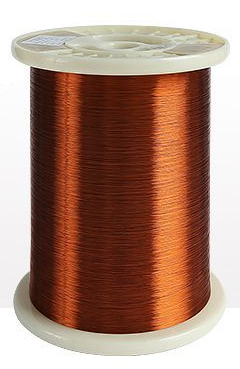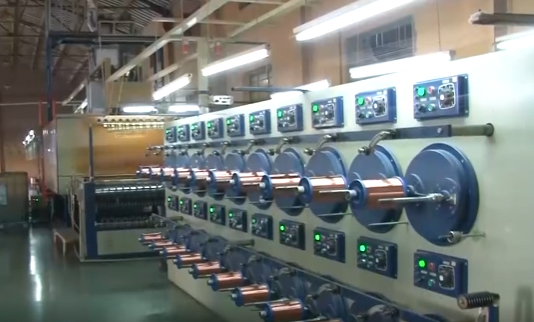Enameled wire is an insulated wire used to manufacture coils or windings in electrical products. Also called winding wire. Magnet wire must meet a variety of usage and manufacturing process requirements. The former includes its shape, specifications, can work at high temperature for short and long-term, and withstand strong vibration and centrifugal force at high speed in certain occasions, withstand corona and breakdown under high voltage, and withstand chemical resistance under special atmosphere, etc. The latter includes the requirement to withstand stretching, bending and abrasion during winding and embedding, as well as swelling, erosion during dipping and drying, etc.

Magnet wires can be classified by their basic composition, conductive core, and electrical insulation. Generally, it is divided into enameled wire, wrapped wire, enameled wrapped wire and inorganic insulated wire according to the insulating material and manufacturing method used for the electrical insulating layer.

Enameled Wire
The conductor is coated with the corresponding paint solution, and then the solvent is evaporated and the paint film is cured and cooled. The enameled wire can be divided into polyester enameled wire, polyesterimide enameled wire, polyamideimide enameled wire, polyimide enameled wire, as well as oil paint, acetal paint, polyurethane enameled wire and so on according to the insulating paint used. Sometimes it is also classified according to the particularity of its use, such as self-adhesive enameled wire, refrigerant resistant enameled wire, etc.
The earliest enameled wire is oily enameled wire, which is made of tung oil and so on. The paint film has poor wear resistance and cannot be directly used to manufacture motor coils and windings. It needs to be wrapped with cotton yarn when used. Later, the polyvinyl formal enameled wire came out, and its mechanical properties were greatly improved, and it could be directly used in motor windings, and it was called high-strength enameled wire.
With the development of weak current technology, self-adhesive enameled wires have appeared, which can obtain coils with better integrity without dipping and baking. However, its mechanical strength is poor, and it can only be used in micro motors and small motors. In addition, in order to avoid the trouble of removing the paint film first during welding, the straight-soldering enameled wire has been developed, and the coating film can fall off by itself in the high temperature tin enamel bath, making the copper wire easy to weld.
Due to the increasingly wide application of enameled wire and the increasingly stringent requirements, composite enameled wire has also been developed. The inner and outer paint films are composed of different polymer materials, such as polyesterimide/ polyamideimide enameled wires.
Wrapped Wire
Wrapped wire is an important variety in winding wire. In the early days, cotton yarn and silk, called yarn-covered wire and silk-covered wire, were used in motors and electrical appliances. Due to the large insulation thickness and low heat resistance, most of them have been replaced by enameled wires. Currently only used as high frequency winding wire. In the large and medium-sized winding wires, when the heat resistance level is high and the mechanical strength is high, the glass wire wrapped wire is also used, and the appropriate adhesive paint is used during manufacture.
Paper-covered wire still occupies a considerable position in the wrapped wire, mainly used in oil-immersed transformers. The oil-paper insulation formed at this time has excellent dielectric properties, low price and long service life.
In recent years, the film wrapping wire has developed rapidly, mainly including polyester film and polyimide film wrapping wire.
Inorganic Insulated Wire
When the heat resistance level requirements exceed the limit of organic materials, inorganic insulating paints are usually applied. Existing inorganic insulated wires can be divided into glass film line, oxide film line and ceramic line.
